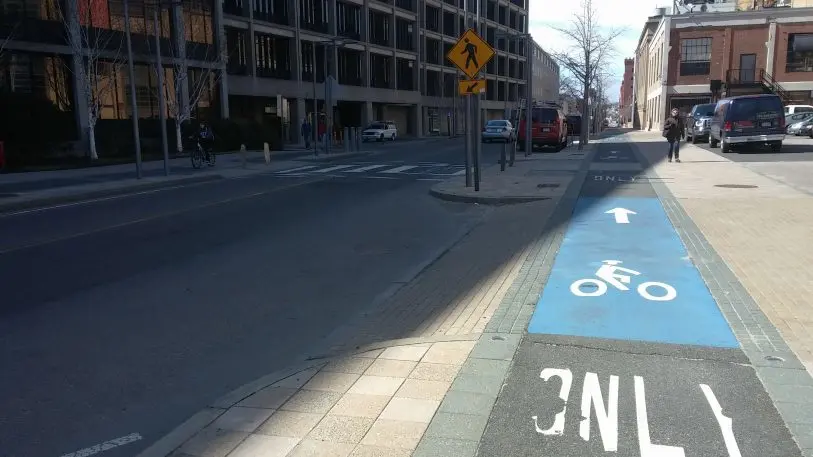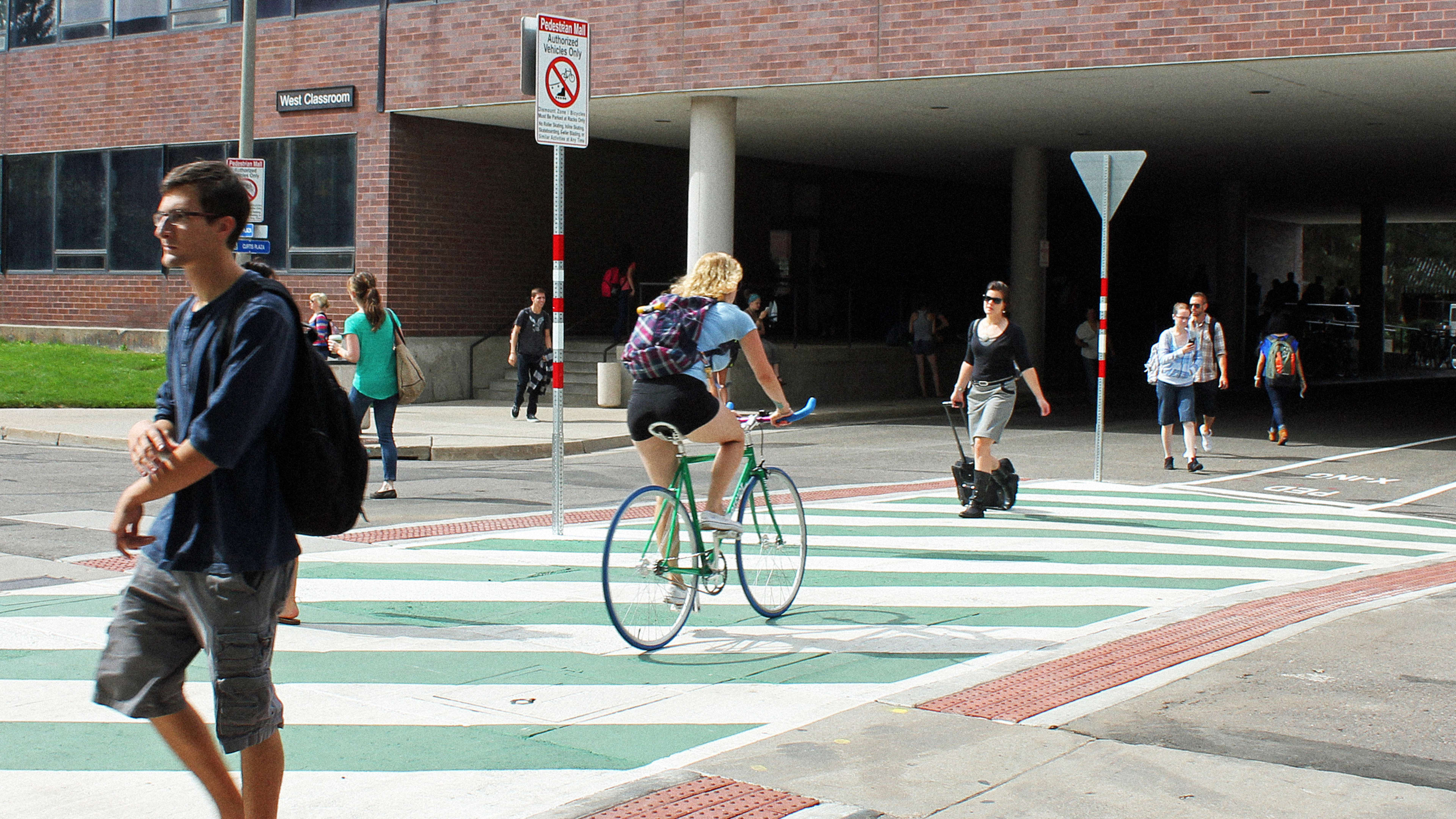When it comes to quick, efficient, inexpensive, and relatively enjoyable ways for cities to lower their carbon emissions, it’s hard to beat bike lanes and good public transit. Well-designed, safe cycling infrastructure encourages more people to ride bikes that emit no carbon and take up a lot less space to transport a person. Swift, connected, and wide-reaching public transportation gets people where they need to go faster, and without the hassle of driving and parking. Given that transportation emits the most carbon of any sector in the U.S., and the vast majority of people navigate their communities in diesel-powered cars, the time is long overdue to reprioritize the ways we get around.
But cities in the U.S. have been slow to do so. Around 76% of Americans drive alone to work, and another 9% carpool. That doesn’t leave much left who bike, walk, or take transit. Needless to say, this is not great for the environment. “We’re at a point where everything we do needs to be motivated by climate change,” says Corinne Kisner, executive director of the National Association of City Transportation Officials (NACTO). “There’ s a huge opportunity for cities in particular to change their course.”
To spur that change, NACTO will give five cities–Atlanta, Boston, Denver, Minneapolis, and Philadelphia–something of a crash course in building out bike and transit infrastructure at scale, and incredibly quickly. NACTO, along with the Natural Resources Defense Council and Delivery Associates, will work in close concert with the cities’ transportation departments to design and implement high-quality bike and transit corridors by the end of 2020. The idea is to boost bike and transit ridership across the cities, get people out of their single-occupancy vehicles, and proactively work to meet climate goals. “Our intention with the accelerator is to be a support system to the city and really catalyze internal processes to make change quickly, and start to build the muscle memory in the industry to implement a really transformative project once, then multiple times,” Kisner says.

One of the main issues cities face when trying to build out bike and transit infrastructure is pushback from residents and lack of political support. Residents, particularly those who have lived in places a long time, often protest the removal of parking that good-quality green transit corridors necessitate, and local politicians fear retribution for suggesting it. But the thing is, Kisner says, “people have a really hard time imagining something else on their streets until they see it.” In cities and neighborhoods, the first bike lane or transit corridor projects often receive the most pushback. But once people adjust, resistance lessens, and demand even grows. “Part of the model of the accelerator is to help city staff get through that period of pushback and pilot something new to show the public: Actually, this can be a really positive thing that achieves multiple goals at the same time.” All of the participating city governments, Kisner says, have expressed interest in improving green transit options, but feel they have been slow to make changes. The NACTO accelerator will help them build out feasible projects and implementation timelines and stick to them; NACTO will also conduct public outreach around the importance of such projects. The accelerator will enable cities to jump-start the process of building out a connected network of green streets, which might include fully separated bike and transit lanes, and much less parking.
In their work with over 80 cities across the country, NACTO has identified physical street design as one of the most significant factors in encouraging behavior change. “By controlling and making changes to the street, we can redistribute the space given to cars to make transit, walking, and biking more convenient, safer, and more welcoming,” Kisner says. “The street design really does shift behavior, and by making those modes convenient and–and eventually the default in many places–you can accelerate the adoption of low-carbon modes.”
Recognize your brand’s excellence by applying to this year’s Brands That Matter Awards before the early-rate deadline, May 3.
